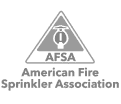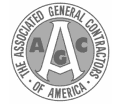About Foam Fire Suppression for Aircraft Hangars
Military and commercial aircraft of today are incredibly sophisticated, expensive pieces of equipment. They’re stored in aircraft hangars where you expect them to be safe, but consider this: every craft is filled with flammable fuel, and extra gasoline may also be stored on the premises. Regular maintenance activities introduce several ignition sources to the scene. One wrong move could mean disaster.
Since aircraft themselves create large obstructions, typical fire protection systems may not be adequate. That’s why you need to follow National Fire Protection Association (NFPA) 409, the standard on fire protection for aircraft hangars.
Aircraft Hangar Classifications
Before you choose the proper fire protection system, you need to determine which aircraft hangar classification your facility falls under. NFPA 409 outlines four categories:
- Group I hangars are larger than 40,000 square feet and/or have access doors over 28 feet tall.
- Group II hangars are 40,000 square feet or less and have access doors 28 feet tall or shorter.
- Group III hangars are 30,000 square feet or less and have access doors 28 feet tall or shorter. They may be an open bay hangar or a row hangar with multiple units.
- Group IV hangars are constructed of a membrane-covered rigid steel frame.
Fire Protection Systems for Aircraft Hangars
In general, Group I and II hangars used to store and service fueled aircraft can choose from the following fire suppression systems:
- Foam-water deluge system with supplementary foam systems under aircraft wings
- Automatic sprinklers combined with an automatic foam system
- Automatic closed-head, foam-water sprinklers are also an option for Group II hangars
Group III hangars don’t normally require fixed fire protection systems, but check with your local building codes to be sure. If you engage in hazardous operations within your Group III hangar (for example, fuel transfer, welding, spray painting and torch cutting), you need to follow the fire protection requirements for Group II hangars.
For Group IV hangars storing fueled aircraft, your options include:
- Low-expansion foam system
- High-expansion foam system
If your Group I, II or IV hangar houses only unfueled aircraft, your options include:
- Single-interlock pre-action sprinkler system
- Wet pipe pre-action sprinkler system
In addition to the fire suppression system itself, you must follow a number of other aircraft hangar fire protection requirements, including but not limited to:
- Water storage tanks and fire pumps
- Handheld foam and/or water hoses
- Tanks and pumps for storing concentrated foam agents
- Trench draining system on the hangar floor
- Protection for structural steel columns
Choosing the Right Fire Protection System for Your Aircraft Hangar
You clearly have many design and installation options to choose from. It’s also important to implement each system properly for compliance purposes. You must weigh these options carefully and choose the most effective, economical and compliant choice possible to protect your high-value aircraft.
Kauffman Co. designs, installs, repairs, replaces and inspects an aircraft hangar foam fire suppression system, including those made by ANSUL. This foam system fights the types of fires that break out in aircraft hangars in accordance with NFPA 409 and local Texas codes. ANSUL’s system is designed to suppress flames in areas with large quantities of flammable liquids, making it the perfect solution for many aircraft hangars.
Still not sure what the proper fire protection system is your aircraft hangar? We can assess your facility and help you make the best choice for your needs. To learn more, or to schedule an appointment with a fire protection specialist in the Houston area, please contact Kauffman Co. today!















